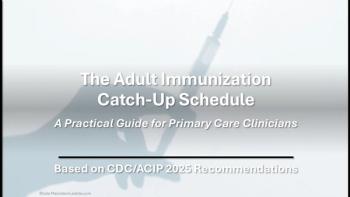
DAA Combination Confirmed Highly Effective Against HCV in Real-world Setting
Sustained virologic response was seen in 99% of subjects, reflecting rates seen in pre-registration studies. Adverse events were mild.
An all-oral combination of the second-generation direct-acting anti-viral agents (DAAs) ombitasvir, paritaprevir, and ritonavir with or without dasabuvir and with or without ribavirin is safe and effective in hepatitis C virus (HCV) genotype 1-infected patients treated in the real-world setting, according to a new study.
In pre-registration studies, virologic and safety outcomes of this antiviral combination have shown high sustained virologic response (SVR) rates with good tolerability in most patients, stated researchers led by Robert Flisiak of the Department of Infectious Diseases and Hepatology at the Medical University of BiaÅystok in Bialystok, Poland. Flisiak and colleagues conducted a study to confirm these clinical trial findings in the treatment of genotype 1 and 4 hepatitis C under real-world conditions.
The researchers published their
The multicenter, open-label study enrolled 209 patients with chronic HCV infections, most of them with genotype 1b-infections; more than half of the patients had liver cirrhosis. Nearly three-quarters of the patients had failed previous antiviral therapies and nearly half had not responded. Clinical and laboratory data, including virologic response, were collected at baseline, at the end of treatment, and 12 weeks after end of treatment.
The results show that at 12 weeks after end of treatment, SVR was achieved by virtually all (99%) of the patients, ranging from 96.4% to 100.0% across subgroups. All Child–Pugh B and post-orthotopic liver transplantation patients achieved SVR.
Virologic failure was only experienced by two patients (1%), who were both infected with the HCV genotype 1b, had liver cirrhosis, and had not responded to previous pegylated-interferon-based regimens.
Adverse events occurred in 151 (72.2%) patients and were mostly mild and associated with the use of ribavirin. Serious adverse events, including hepatic decompensation, renal insufficiency, anemia, hepatotoxicity and diarrhea, were reported in eight (3.8%) patients. In five (2.4%) patients, adverse events led to treatment discontinuation. On-treatment decompensation was experienced by seven (3.3%) patients.
The results of the study confirm previous findings and provide “real-world evidence for excellent antiviral potency” of this drug combination in the treatment of HCV genotype 1 and 4 infection, the researchers stated. The regimen also proved highly effective in difficult-to-treat populations, such as those with liver cirrhosis or those who failed to respond to previous anti-viral therapies.
Data regarding virologic outcomes in those patients who failed pegylated-interferon plus ribavirin and protease inhibitor triple therapy is limited, but this combination DAA regimen was 100% effective (16/16 patients) in this group, they stated.
Child–Pugh B patients with moderate liver disease may benefit from this treatment, but other therapeutic options should be considered for those with a history of hepatic decompensation or current signs of hepatic functional impairment, they noted.
In conclusion, the researchers stated the combination DAA regimen proved highly effective in patients with chronic HCV infection, including those with advanced liver disease, a history of nonresponse to pegylated-interferon-based regimens, or post-liver transplantation, and suggested that with the low risk of serious adverse events, the regimen “is a good treatment option for patients with chronic HCV genotype 1 infection.”
Newsletter
Enhance your clinical practice with the Patient Care newsletter, offering the latest evidence-based guidelines, diagnostic insights, and treatment strategies for primary care physicians.























































































































































































































































































